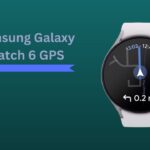Alphabet recently revealed its latest upgrade to its artificial intelligence system, Gemini, coming out with three new models: Gemini Ultra, Gemini Pro, and Gemini Nano. Gemini Ultra is positioned as the largest and most advanced, intended to take on complex reasoning and nuanced problem solving. Gemini Pro offers robust capabilities for general-purpose AI use cases, but at a more accessible scale. Finally, Gemini Nano is a lightweight version optimized specifically for mobile applications with focused, niche functionalities.
While the full scope of Gemini’s upgrades is still coming into focus, Alphabet was confident enough to position Ultra as superior to GPT 3.5, one of OpenAI’s past leading chatbot models. However, uncertainty remains about how Gemini stacks up against GPT 4, and OpenAI’s latest offering is setting new benchmarks in the AI space. Without outright confirming it can surpass GPT 4, questions linger about whether Gemini Ultra truly represents the peak of natural language AI systems. Alphabet points to testing showing Gemini outpacing rivals on 30 out of 32 head-to-head benchmarks, implying it still holds up well against stiff competition.
Between OpenAI’s GPT models, Microsoft-backed Copilot, and more players entering the game, the tech giants are fiercely competing to push AI capabilities forward. Each new launch promises expanded use cases, better efficiency and accuracy, and advances that reshape how software can augment human thinking and productivity. As AI becomes further embedded in consumer and enterprise technology, delivering on these AI ambitions also plays a key role in driving the adoption of complementary cloud platforms and services. In rolling out its enhanced Gemini line built on TensorFlow, Alphabet aims to show Google Cloud can power the next generation of artificial intelligence that businesses, developers, and end users will come to rely on.
You May Find Interest: Samsung and Google Are Developing Open 3D Audio Technology to Take On Dolby Atmos




![How Much is Lil Baby’s Net Worth in 2024 [Latest Info] Lil Baby Net Worth](https://www.wariat.org/wp-content/uploads/2024/03/Lil-Baby-Net-Worth-150x150.jpg)
![Rob Lowe Net Worth Speculation in 2024 [Comparative Analysis] Rob Lowe Net Worth](https://www.wariat.org/wp-content/uploads/2024/03/Rob-Lowe-Net-Worth-150x150.jpg)

